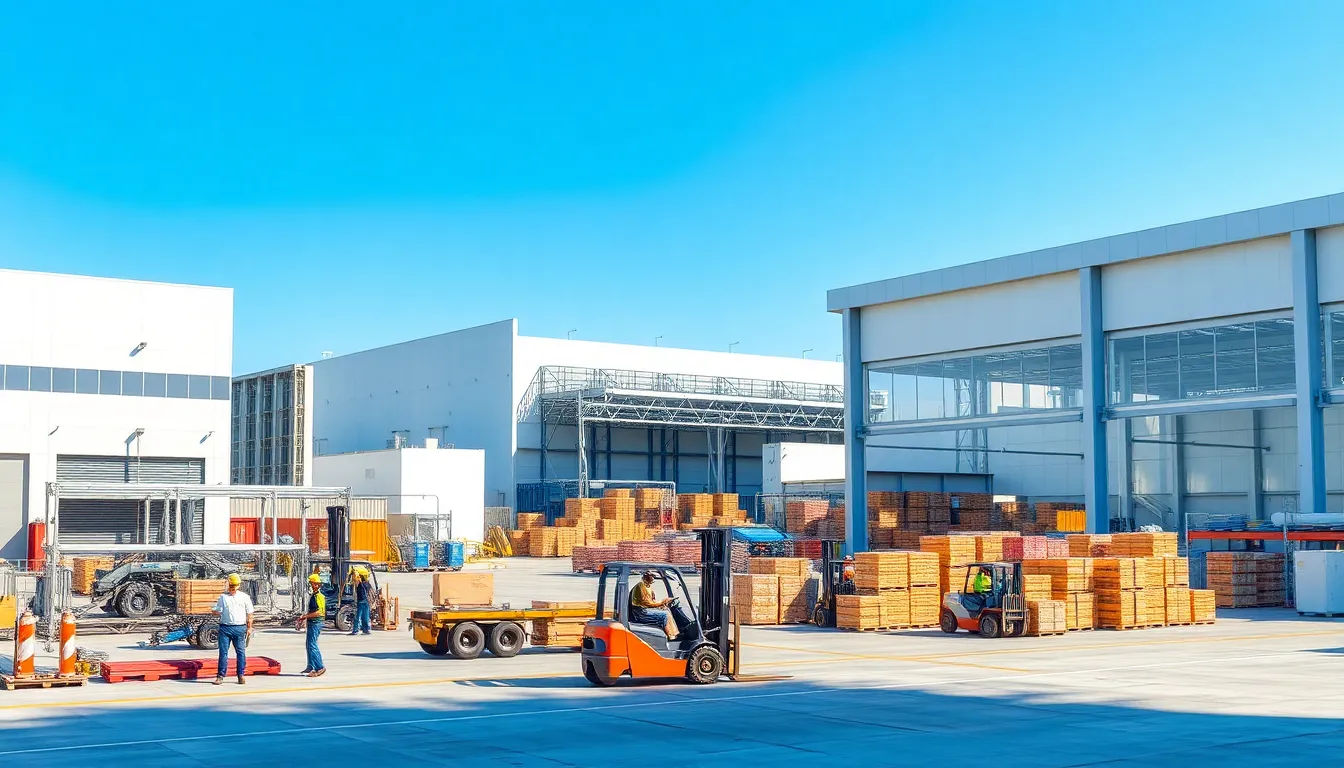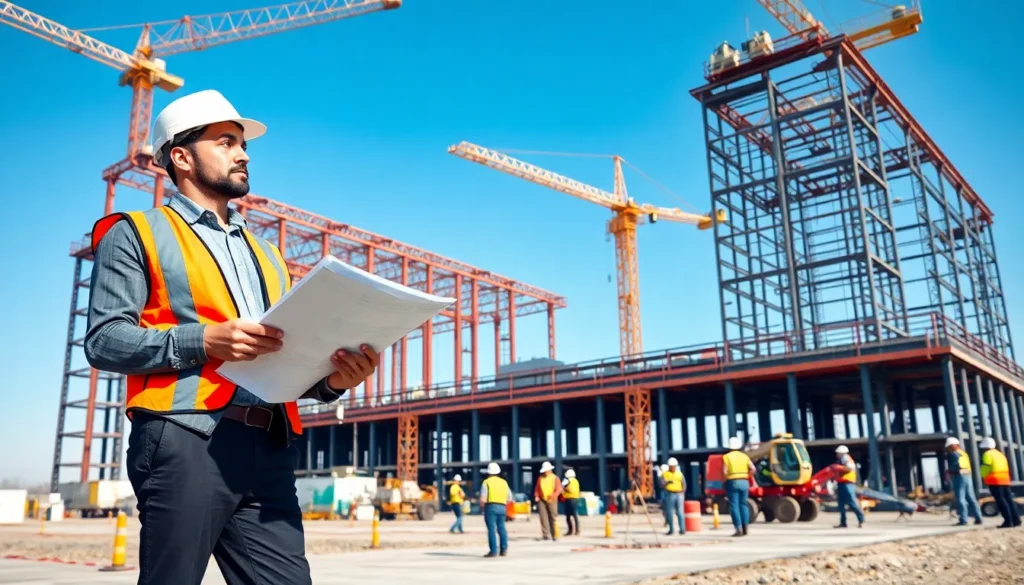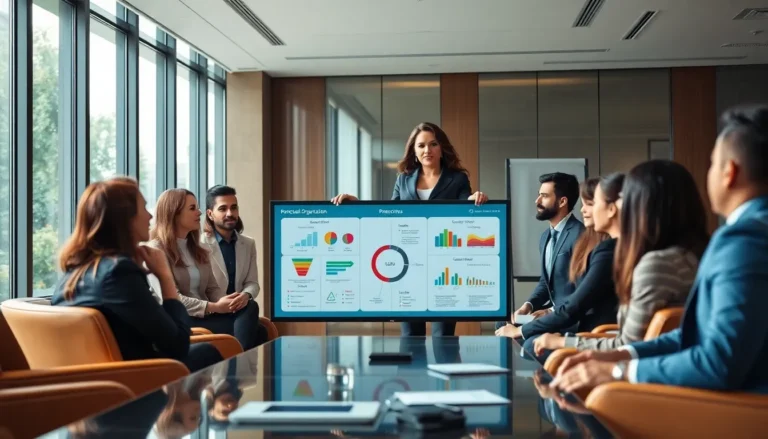When you hear the phrase “industrial building construction,” you might picture towering steel frames or sprawling warehouses. But wait, there’s more. These structures are not just about size and strength: they embody a unique blend of functionality, design, and untold potential. Whether he’s overseeing a vast manufacturing plant or she’s coordinating a sleek distribution center, understanding industrial construction is essential for anyone in the business. So grab your hard hat, and let’s break down the intriguing realm of industrial building construction.
Table of Contents
ToggleUnderstanding Industrial Building Types

Industrial buildings come in various types, each serving distinct purposes. Let’s jump into the most common categories:
Manufacturing Facilities
These spaces are designed for the production of goods. This includes everything from assembly lines to specialized manufacturing processes. Their layout often optimizes workflow and minimizes waste, ensuring efficiency.
Warehouses
Warehouses store goods before they reach retail outlets. They are often massive structures with high ceilings and wide-open spaces that allow for easy movement of trucks and forklifts.
Distribution Centers
Similar to warehouses, distribution centers focus on the swift transfer of products rather than long-term storage. This type enhances supply chain logistics and often features advanced technology for inventory management.
Research and Development Facilities
Not all industrial buildings are about manufacturing. R&D facilities are designed for innovation and product development. These spaces require specific designs to foster creativity and accommodate specialized equipment.
Cold Storage Facilities
In industries like food and pharmaceuticals, maintaining product temperature is crucial. Cold storage facilities are equipped to keep perishables in optimal conditions until they reach consumers.
Flex Spaces
Flex spaces are versatile industrial buildings that can serve multiple purposes. A company might use a flex space for office, manufacturing, and storage, all under one roof.
Key Features of Industrial Buildings
Industrial buildings are unique in their design and function. Here are some key features that set them apart:
Height and Space
Most industrial buildings boast high ceilings to accommodate large machinery and materials. This vertical space enables better storage and enhances operational efficiency.
Robust Infrastructure
These structures must support heavy equipment and manage significant wear and tear. Hence, strong foundations and durable materials are essential in design considerations.
Functional Layout
The design emphasizes a streamlined workflow, reducing bottlenecks. An intuitive layout accommodates various processes, from loading docks to production lines.
Safety Measures
Safety protocols are a must. This includes fire suppression systems, proper ventilation, and compliance with safety regulations to ensure a secure working environment for employees.
Planning and Design Considerations
Planning and designing industrial buildings involve various considerations to meet operational needs. Here’s a look at the essential steps:
Zoning Regulations
Before breaking ground, understanding local zoning laws is imperative. These regulations dictate the types of activities allowed on the property.
Site Selection
Choosing the right location is critical. Factors like accessibility to transportation, utility availability, and environmental impact play pivotal roles.
Future Growth
When designing, companies should consider future scalability. Structures should allow for easy modifications to accommodate growth without major renovations.
Sustainability
In recent years, more companies are exploring sustainable construction practices. Integrating eco-friendly materials and energy-efficient systems is becoming standard, not just an option.
Construction Methods and Techniques
Modern industrial construction employs various methods to enhance efficiency and reduce costs. Some popular techniques include:
Pre-engineered Buildings
These structures are manufactured off-site and assembled on location. This method cuts down on construction time and often reduces costs.
Modular Construction
Just like building blocks, modular construction involves assembling pre-fabricated modules. This technique allows for rapid deployment and can be highly customizable.
Green Building Techniques
As sustainability gains traction, builders are implementing eco-friendly techniques such as using recycled materials, solar panels, and efficient heating and cooling systems.
Advanced Technology
The use of technology, from 3D modeling to drone surveying, revolutionizes the construction process, enhancing accuracy and safety.
Sustainable Practices in Industrial Construction
With a growing emphasis on sustainability, eco-friendly practices in industrial construction are on the rise. Here are a few:
Eco-friendly Materials
Using sustainable materials reduces environmental impact. Options like recycled steel and reclaimed wood promote a greener footprint.
Energy-efficient Systems
Installing solar panels and energy-efficient HVAC systems makes buildings more sustainable and reduces operational costs over time.
Waste Reduction Strategies
Implementing waste management practices during construction minimizes landfill impact. This includes recycling debris and reusing materials whenever possible.
Challenges in Industrial Building Construction
Even though its many benefits, industrial building construction poses several challenges that need to be navigated:
Regulatory Compliance
Navigating zoning laws and building codes can be a tedious process. It’s crucial to stay compliant with all regulations to avoid costly penalties.
Supply Chain Issues
Material shortages can disrupt timelines. Planning ahead and building strong relationships with suppliers can mitigate these risks.
Skilled Labor Shortage
The construction industry often faces a shortage of skilled workers. Investing in training programs can help bridge this gap.
Future Trends in Industrial Construction
Looking ahead, several trends are shaping the future of industrial construction:
Automation and Robotics
The incorporation of automation in construction processes promises to enhance precision and reduce labor costs. Robots can assist in repetitive tasks, freeing up human workers for more complex roles.
Smart Buildings
Integrating technology into building systems creates smart buildings that optimize energy use and enhance security. Sensors can monitor conditions in real-time, allowing for adjustments on the fly.
3D Printing
As 3D printing technology develops, it could revolutionize how industrial structures are built. This method has the potential to reduce waste significantly and expedite the construction process.



